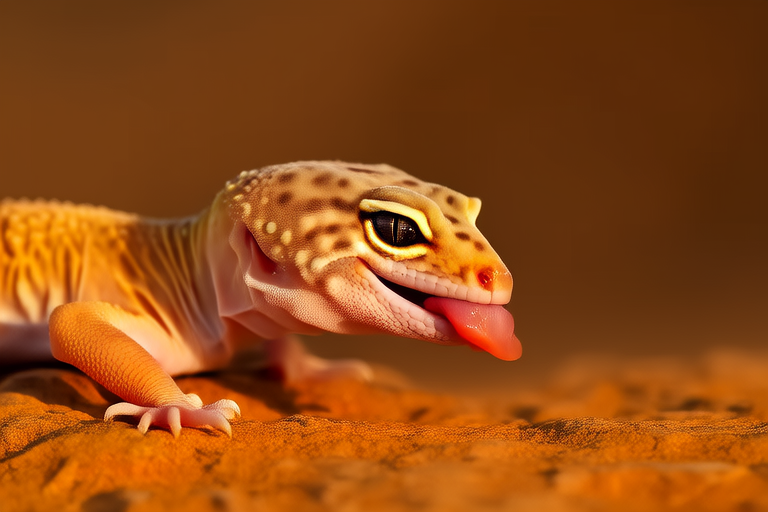The Secret Life of Leopard Geckos: Uncovering Their Unique Behaviors and Needs
Leopard geckos have gained immense popularity among pet owners over the years, thanks to their docile nature, vibrant colors, and relatively low maintenance requirements. These small lizards, native to the rocky, arid regions of Afghanistan, Pakistan, and parts of India, offer a delightful introduction to the world of reptiles for beginners, while also providing seasoned reptile enthusiasts with fascinating subjects of study.
Natural Habitat and Behavior
Understanding the natural habitat of leopard geckos is crucial for replicating their environment in captivity. In the wild, these geckos thrive in arid desert landscapes characterized by rocky outcrops and sparse vegetation. They are primarily nocturnal, venturing out at night to hunt insects and avoid the scorching daytime temperatures. This nocturnal behavior is influenced by their natural habitat, where daytime heat can reach extreme levels, making nighttime hunting safer and more efficient.
Unique Behaviors
Leopard geckos exhibit several unique behaviors that make them truly fascinating. One of the most remarkable is their ability to perform autotomy, or tail shedding. When threatened, they can voluntarily detach their tails to distract predators and escape. The detached tail continues to wiggle, diverting attention from the gecko. While the tail eventually regrows, it never fully regains its original appearance, often appearing shorter and less vibrant.
Communication among leopard geckos is subtle but effective. They use body language and vocalizations to convey messages. Male geckos, for instance, may bob their heads to assert dominance or attract females. Females, on the other hand, might flick their tongues to show interest or agitation. Understanding these non-verbal cues can help owners better interpret their pet’s mood and intentions.
Dietary Needs
In the wild, leopard geckos are insectivores, feeding mainly on crickets, mealworms, and other small insects. Captivity presents an opportunity to provide a more varied and nutritionally balanced diet. Owners should offer a mix of appropriately sized insects, ensuring that the prey items are gut-loaded (fed nutritious foods before being offered to the gecko) and occasionally dusted with calcium and vitamin supplements. This practice helps prevent deficiencies and ensures optimal health.
While live insects are preferred, some owners opt for pre-killed or frozen-thawed options to minimize the risk of injury to the gecko. It’s important to note that overfeeding can lead to obesity, so portion control is essential. A good rule of thumb is to feed adult geckos every two to three days, offering as many insects as the gecko can consume in about 15 minutes.
Housing Requirements
Creating an appropriate living space for leopard geckos is vital for their well-being. A standard 10-gallon tank is sufficient for a single adult gecko, but larger tanks are recommended for multiple geckos or if you want to provide additional space for enrichment activities. The tank should be equipped with a secure lid to prevent escapes.
Substrate selection is critical, as inappropriate choices can lead to impaction or other health issues. Many owners prefer paper towels or reptile carpet for ease of cleaning and safety. Avoid loose substrates like sand or gravel, which pose a choking hazard. Providing hiding spots, such as caves or tunnels, allows geckos to retreat when feeling stressed or tired.
Maintaining the right temperature gradient within the tank is essential for regulating metabolism and digestion. A daytime basking spot should reach around 88 to 90 degrees Fahrenheit, while the cooler end of the tank should stay between 75 and 80 degrees. At night, temperatures can drop to 70 to 75 degrees. A reliable thermostat and thermometer are necessary tools for monitoring and adjusting temperatures.
Proper lighting is equally important, though leopard geckos do not require UVB lighting for vitamin D synthesis, as they obtain this through their diet. However, providing a low-wattage red or blue bulb can simulate a day-night cycle and encourage natural behaviors. Regularly cleaning the tank and maintaining hygiene prevents bacterial growth and keeps your gecko healthy.
Health and Common Issues
Regular health checks are crucial for early detection and treatment of potential issues. Signs of illness include lethargy, loss of appetite, weight loss, respiratory distress, or changes in feces. Common ailments include metabolic bone disease, caused by calcium deficiency, and respiratory infections, often linked to improper humidity levels.
To maintain optimal health, owners should familiarize themselves with proper handling techniques and observe their gecko daily for any unusual behavior or physical changes. Consulting a veterinarian specializing in reptiles can provide valuable guidance and peace of mind.
Enriching Their Environment and Building a Bond
Creating an enriched environment not only benefits the gecko’s physical health but also enhances mental stimulation and strengthens the owner-pet relationship. Introducing new toys, such as climbing structures or puzzle feeders, encourages exploration and problem-solving. Handling your gecko gently and regularly helps it become accustomed to human interaction, fostering trust and companionship.
Spending time with your gecko, observing its behavior, and learning its preferences can deepen the bond between you. This rewarding experience highlights the unique charm of these captivating creatures, making each moment spent with them both enlightening and enjoyable.
In conclusion, leopard geckos offer a delightful and educational journey into the world of reptiles. By understanding their natural habitat, unique behaviors, dietary needs, housing requirements, and health considerations, owners can provide their pets with a fulfilling and healthy life. The secret life of leopard geckos reveals a wealth of fascinating traits and behaviors, making them not just pets, but companions that captivate and inspire curiosity.
